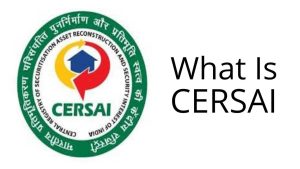What is MSME?
MSME stands for Micro, Small and Medium Enterprises. In a developing country like India, MSME industries are the backbone of the economy.
The MSME sector contributes to 45% of India’s Total Industrial Employment, 50% of India’s Total Exports and 95% of all industrial units of the country and more than 6000 types of products are manufactured in these industries (As per msme.gov.in). When these industries grow, the economy of the country grows as a whole and flourishes. These industries are also known as small-scale industries or SSI’s.
- Criteria for MSME Registration.
- Benefits of MSME Registration
- Registration Process
- Documents Required for MSME Registration
Criteria for MSME Registration
The existing MSME classification was based on the criteria of investment in plant and machinery or equipment. So, to enjoy the MSME benefits, the MSMEs have to limit their investment to a lower limit, as mentioned below:
Existing MSME Classification | ||||
Sector | Criteria | Micro | Small | Medium |
Manufacturing | Investment | < Rs.25 lakh | < Rs.5 crore | < Rs.10 crore |
Services | Investment | < Rs.10 lakh | < Rs.2 crore | < Rs.5 crore |
These lower limits are killing the urge to grow as they are unable to scale their businesses further. Also, there has been a long-pending demand for the revision of MSME classification so that they can further expand their operations while continuing to avail the MSME benefits.
Now, under the Aatmanirbhar Bharat Abhiyan (ABA), the government revised the MSME classification* by inserting composite criteria of both investment and annual turnover. Also, the distinction between the manufacturing and the services sectors under the MSME definition has been removed. This removal will create parity between the sectors. The following is the revised MSME classification*, where the investment and annual turnover, both are to be considered for deciding an MSME.
Revised MSME Classification | |||
Criteria | Micro | Small | Medium* |
Investment & Annual Turnover | < Rs.1 crore & < Rs.5 crore | < Rs.10 crore & < Rs.50 crore | < Rs.50 crore & < Rs.250 crore |
* Further upward revision made by the government
Benefits of MSME Registration
Accordingly various New units can avail the following benefits available to MSME.
- Low Interest rates on Bank loans.
- Collateral Free loans.
- Easy Working capital available.
- Various Tax rebates.
- Government Tenders preferences.
- Waiver in government Tender Fees.
- Subsidies on Patent Registration.
- Preference for Government license.
- Preference in International Trade Fairs.
Registration Process
- To do the registration the small and medium scale industry owner has to fill a single form which he can do online as well as offline.
- If a person wants to do registration for more than one industry then also he/she can do individual registration.
- To do the registration he/she has to fill a single form which is available at the website which is listed below.
- The document required for the registration is Personal Aadhar number, Industry name, Address, bank account details and some common information.
- In this, the person can provide self-certified certificates.
- There are no registration fees required for this process.
- Once the detail-filled and upload you would be getting the registration number.
Documents Required
- Aadhar Number
- PAN Card
- Copy of Industrial Licence.
- Bills and receipts on purchase of machinery.
- Bank Account Details .
- Business address proof.
- Copies of sale and purchase bills.
- Partnership Agreement
- In case of Companies-
- Memorandum of Associations (MOA).
- Articles of Associations (AOA).
- Certificate of Incorporation.
- Copy of Resolution passed in general meeting.
- Copy of Board Resolution.



